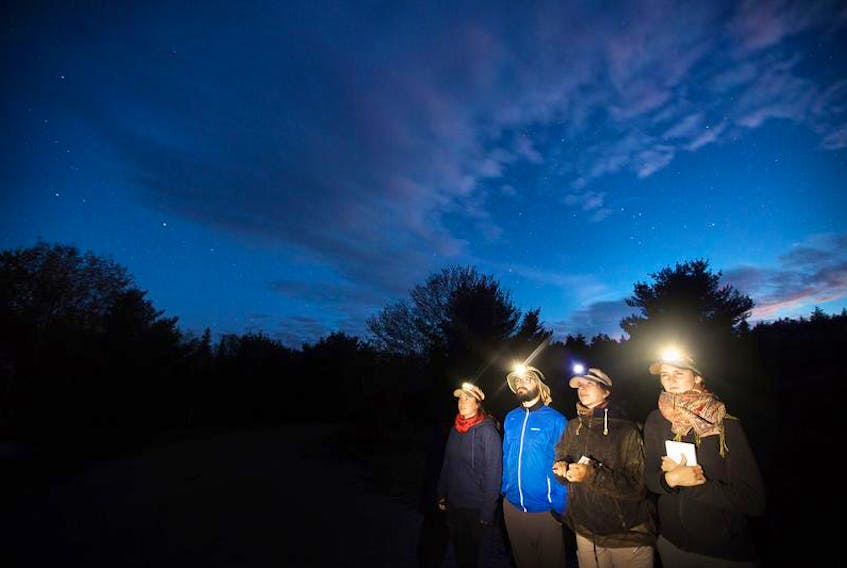The Mersey Tobeatic Research Institute (MRTI) is interested in partnering with landowners in southwestern Nova Scotia who have bats on their property in a new acoustic monitoring project that will help tell the tale of whether or not the three species native to Nova Scotia are making a comeback, after being nearly wiped out by a fungus dubbed the white-nose syndrome.
It is estimated that 95 per cent of the province’s population of the little brown bat, the northern long-eared bat and the tri-coloured bat, which can be found in southwestern Nova Scotia and parts of North America, were killed off by white-nose syndrome in the winter of 2011, said Lori Phinney, wildlife biologist at MRTI. “Bats are in very close contact with each other during hibernation,” and caves are the types of environment where the white-nose syndrome “thrives and survives. That’s why the decline happened so fast.”
The MRTI has been collecting data since 2013 through their provincial bat reporting website to gain a greater understanding of the bats persisting in the province in the wake of the disease. More than 3,000 sightings of bats have been reported over the past five years. “We have all this data and we want to take it and put it to use,” said Phinney. “[We can] figure out what sightings are significant and act upon that.” Using acoustic monitoring technology and visual counts, researchers are able to record the bat’s echolocation calls to understand site activity levels and identify species.

Phinney said researchers are already monitoring bats at a few properties in southwestern Nova Scotia and are interested in working with more landowners who have significant bat sightings on their property. “We need people to report observations of bats each time one is seen, especially repeat sightings in an area,” said Phinney. “That’s the best thing people can do for them. Reporting your bat sightings provides significant information on the bats we have left in the province.” MTRI researchers are also revisiting sites monitored before white-nose syndrome hit to see what is going on now, with some encouraging results. Through visual surveys, a group of over 300 healthy female bats and their pups in southwest Nova Scotia that appear to have evaded the fungus, has grown by 50 bats from 2016 to 2017.
Phinney said people want to know if the bats are making a comeback and the short answer is; it’s too early to tell. “The disease just happened. This is just the beginning of maybe a recovery. We don’t really know yet. Hopefully another key piece we get from research is finding out what’s going on now since the disease hit,” she said.
Bats play an important role in the ecosystem and for the agricultural industry, with the ability to eat up to 1,000 insects an hour, acting as an excellent source of insect control. The MRTI is asking people to report any bat sightings to www.batconservation.ca or the provincial species-at-risk hotline at 1-866-727-3447. For more information on MTRI’s bat project, email [email protected], call 1-902-682-2371 or visit www.merseytobeatic.ca.









